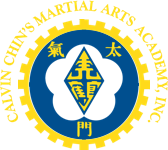We offer a comprehensive program for youths that goes beyond the typical punches, kicks and drills. We teach forms, numerous hand and weapon sets, some with over a hundred postures. It becomes natural for our students to remember the last form they learn, the first form, as well as all those in-between. Over time, they develop an acute ability to memorize and retain sequence.
Traditional martial arts such as kung fu offer a well-balanced training regimen and provide an opportunity for children to develop their coordination, spatial awareness, endurance and focus. Studying a traditional martial art with a lineage of teachers who devoted time and effort in passing the art to future generations instills respect and appreciation; a reverence for antiquity in a techno-driven youth culture. Interacting with other students and providing support for one another teaches children valuable social skills. Sequential learning at the academy - learning bit-by-bit to build knowledge is a valuable tool that enhances memory and critical thinking, and which carries through in other areas of learning. Youths typically seek immediate gratification, yet learningtraditional martial arts forces youths to seek longer term goals. Furthermore, youths learn that refinement produces better results, and it motivates them to improve through practice. Martial arts, at this stage, becomes a self-discipline.
Today, there are issues of bullying and violence among young people. Martial arts training develops very strong self-awareness and control, and this enables youths to retreat from confrontation. Mastering difficult techniques enhances confidence and self-esteem, traits that most bullies and victims generally lack. It is rare for martial artists to engage in confrontations, but when necessary, they will be able to protect themselves in a controlled manner, causing the least physical harm. Our emphasis on using natural strength in our training affords more equal opportunity for both boys and girls to achieve and benefit from the discipline. The Fu Hok Tai He Morn method is also safer for youths whose bones and ligaments are still growing, creating less opportunity for serious injuries that may follow them into their adulthood.
